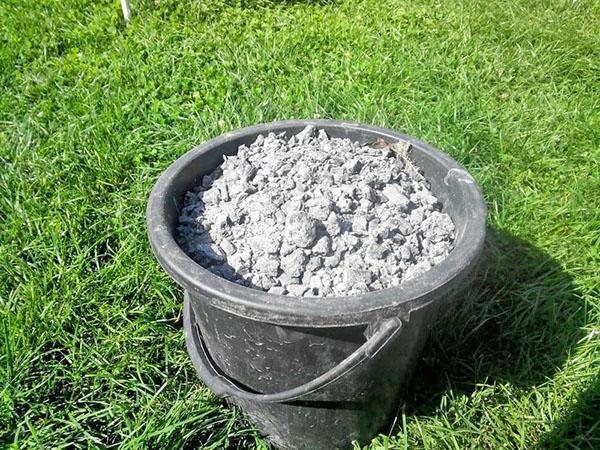We use wood ash as fertilizer for plants
 Wood ash - a very useful product for plants. It contains a large amount of potassium, calcium, magnesium and phosphorus, which plants need during flowering and fruiting.
Wood ash - a very useful product for plants. It contains a large amount of potassium, calcium, magnesium and phosphorus, which plants need during flowering and fruiting.
The disadvantage of wood ash is that it practically does not contain nitrogen, which is necessary for plants during the active growing season. It is necessary to feed the plants with complex mineral fertilizers.
It is not advisable to use nitrogen-containing fertilizers simultaneously with ash. When used in this way, nitrogen reacts with alkali to form ammonia, which quickly evaporates. It's better apply nitrogen fertilizers and ash on different days.
Also, ash cannot be applied to the soil along with phosphorus fertilizers. In this case, the phosphorus will not be absorbed by the plants.
Pros of ash as fertilizer
Wood ash does not contain chlorine, so it can be safely used for fertilization:
- cucumbers;
- zucchini;
- potatoes;
- carrots;
- strawberries;
- raspberries.
All these crops do not tolerate the introduction of chlorine into the soil. In addition, ash reduces the acidity of the soil and makes the soil looser, so it is brought in to normalize the pH level.
If your site is dominated by loam or peat soil, it is recommended to apply from 700 to 1.5 kg of wood ash per 1 m2 area. If you are using ash from straw burning, the rate should be doubled.
When using wood ash as fertilizer, the rate is 100 g per 1 m2 landing area. During the growing season, it is necessary to make a liquid top dressing. For its preparation, 100 g of ash is dissolved in 10 liters of water.
What plants are damaged by ash
Since wood ash has an alkaline reaction, it is not recommended to apply it under crops that grow on acidic soil. These are mainly ornamental plants:
- coniferous crops;
- magnolia;
- azalea;
- rhododendrons.
Neutral soil is not suitable for such plants.
Ash as a remedy for pests and fungal diseases
To get rid of aphids and slugs, moisten the plant leaves in the early morning and sprinkle them with wood ash. This method is effective for potatoes and strawberries.
If you mix the infusion of wood ash, tobacco and laundry soap in equal proportions, you get an excellent remedy for powdery mildew and aphids.
How to prepare wood ash
Collect ash after picnics, burn hazel and diseased tree branches. Ash should be stored in an airtight container. Subject to the storage conditions, the shelf life of wood ash is not limited.
Walnuts release toxic substances that inhibit the growth of other crops. When branches and leaves are burned, these substances break down. Wood ash obtained from burning hazel can be safely used to fertilize other plants.
Read also the article: ash as fertilizer!